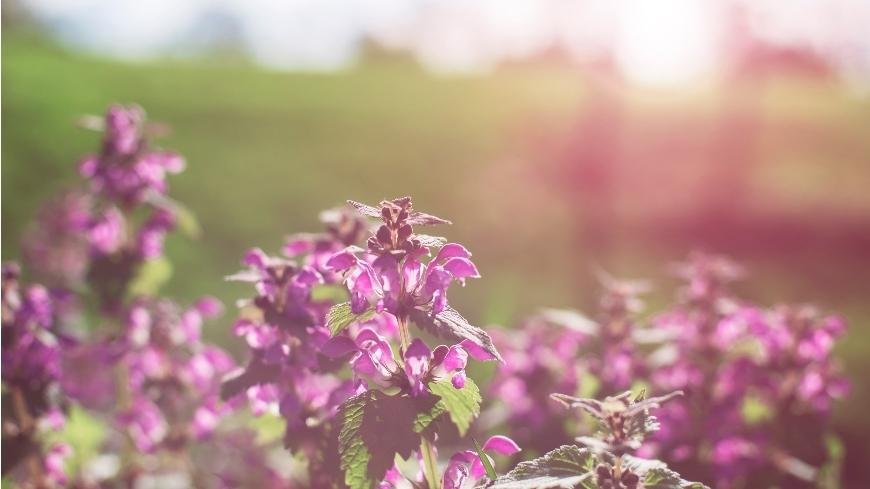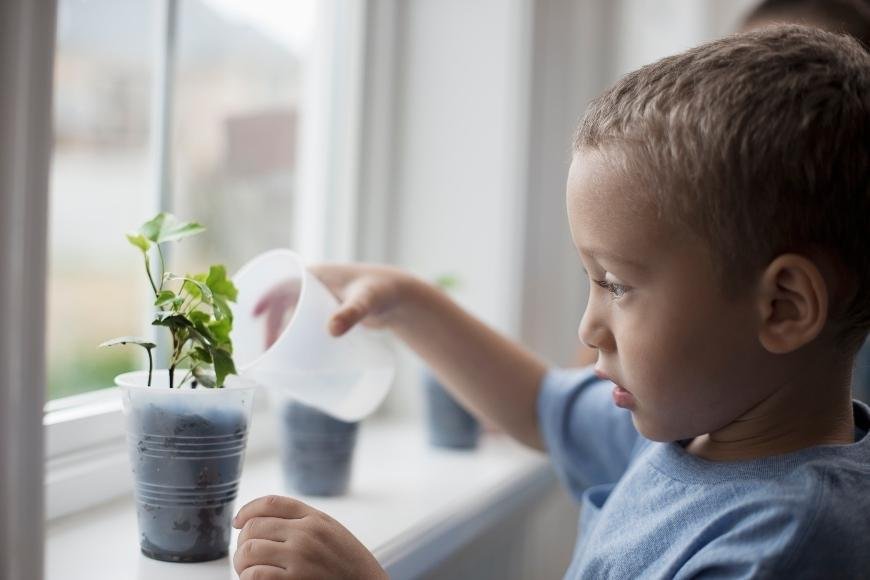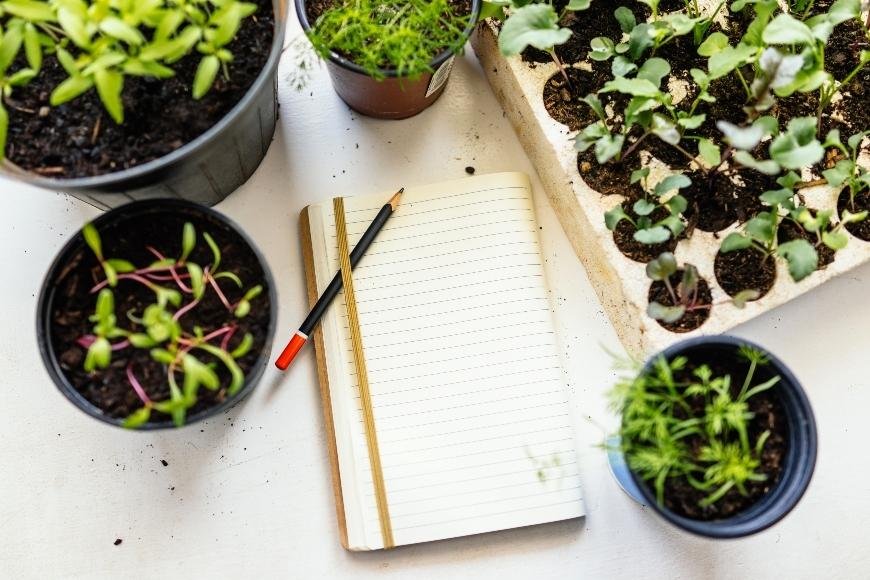How to Grow Catnip
Learn how to grow catnip with our easy guide, from planting seeds to harvesting this feline-favorite herb for your indoor cats and cat toys.

Ready to get started on growing your own catnip? In this comprehensive guide, we will explore the ins and outs of cultivating your very own Nepeta cataria plants. Growing catnip is not only a fun project for young adults interested in recreational herbs but also an excellent addition to any indoor herb garden or outdoor space.
We'll begin by discussing the importance of choosing the right location for your catnip plants, as well as planting techniques using seeds or stem cuttings. From there, we'll delve into proper watering and fertilizing methods to ensure aggressive growth and a healthy plant life.
Lastly, we will cover essential maintenance tips for managing established plants during their growing season, including pruning back aggressive growers and protecting them from potential pests. You'll also learn how to harvest dried catnip leaves that can be used in various applications such as homemade feline pheromone treats or even toys for our feline friends.
By following these expert guidelines on how to grow catnip, you're sure to create an attractive environment that not only provides personal satisfaction but also attracts cats who simply can't resist its allure!
Table of Contents:
- Choosing the Right Location
- Planting Catnip Seeds
- Watering Catnip
- Fertilizing Catnip
- Catnip maintenance
- Harvesting Catnip
- FAQs in Relation to How to Grow Catnip
- Conclusion
Choosing the Right Location

Location selection is paramount when cultivating catnip. Sunlight is essential for a successful crop, so look for an area that gets plenty of direct sunlight throughout the day. The soil should be well-draining and nutrient-rich, so consider adding compost or other organic matter before planting your seeds. Keep in mind that established plants can become aggressive growers, so give them enough room to spread out without crowding out other nearby plants.
Indoor cats may also appreciate having some fresh catnip in their home. Growing indoors requires lots of light as well as consistent temperatures and humidity levels. You’ll want to keep your indoor herb garden away from windows with strong drafts and any areas where cats can easily access it - they love playing with dried catnip just as much as they enjoy eating it.
If you decide on an outdoor space for growing your catnip, raised garden beds work best since they help promote drainage while keeping pests away from the roots of your plants. For those looking to grow larger amounts of this fragrant herb, stem cuttings are a great way to quickly establish multiple new plants at once; however, be aware that these clones will have more aggressive growth habits than traditional seedlings do.
Optimal temperatures for catnip cultivation range between 65°F (18°C) and 70°F (21°C), making spring and summer the best seasons to grow it. When planted outdoors in late spring or early summer after all danger of frost has passed, you’ll get better yields from established plants over time compared to starting from scratch each season. Additionally, adding a bit of feline pheromone around the plant itself is known to attract cats even further. With proper care and attention, you'll soon find yourself harvesting ample amounts of this delightful herb each year - just remember: choose wisely when selecting its final resting place.
Choosing the right location for your catnip is essential to ensure a healthy and successful crop. When deciding where to plant catnip, take into account the soil quality, how much sunlight it gets, drainage and its distance from other plants. Now that you have a spot picked out for your catnip, let's move on to discussing the optimal way of planting it.
Planting Catnip Seeds
Planting catnip seeds is an easy and rewarding task for any gardener. Catnip, or nepeta cataria, is a fragrant herb that has been known to attract cats and make them feel calm and happy. Humans can also reap the benefits of catnip; its dried leaves can be brewed into a soothing tea or used as an ingredient in natural remedies.
When it comes to planting catnip seeds, timing is everything. The optimal period for sowing catnip seeds outside is when the ground has become sufficiently hot to allow germination, typically around mid-May. If you're growing indoors, sow your seeds about 8 weeks before your last frost date. Planting depth should be shallow – no more than 1/4 inch deep – since light helps with seed germination.
Once planted, water regularly but don't overwater; established plants are quite drought tolerant once they get going. Wait no longer; the time to reap your harvest is nigh - 60-90 days depending on climate and hydration. Make sure you give it plenty of sun (at least 6 hours per day) if possible; otherwise supplement with artificial lighting such as grow lights or fluorescent bulbs set 12-18 inches above the plants
If you want even faster growth results, consider taking stem cuttings from established plants instead of starting from seed – this method will yield quicker results since cuttings already have some root development which gives them a head start compared to sowing fresh seed each year. Additionally, take care not to let your catnip become too crowded as it can become an aggressive grower if given ample space and resources - pruning may be necessary if left unchecked.
Once the catnip seeds are sown, they should be given a generous supply of liquid sustenance. Ensuring your catnip is supplied with adequate moisture and nourishment for the best development possible can be accomplished by providing suitable hydration.
Watering Catnip
Watering Catnip is a key part of ensuring healthy growth and production. It's important to water your catnip plants regularly, but not too much. Too little or too much water can both be detrimental to the plant's health.
Aim for a watering regimen of every fortnight when your catnip is in the growing season, and once per month during winter. For each watering, you should use 1 gallon of water for every 12x12 inches of soil surface area.
For optimal hydration of your catnip, an adjustable drip irrigation system with timed release can ensure a steady flow of water over time. This way, they won't get flooded with more liquid than they can absorb before it evaporates or runs off into other areas of the garden. Additionally, make sure that any containers are well-draining so excess moisture doesn’t stay around and cause root rot or fungal diseases like powdery mildew which could damage or even kill your plants.
Finally, remember to never let your catnip dry out completely as this will significantly stunt their growth over time due to lack of access to the necessary nutrients needed for optimal health.
Watering catnip is critical for fostering its growth to the fullest extent. Moving on to the next part of catnip maintenance, fertilizing is a must for optimal growth.
Fertilizing Catnip
When fertilizing catnip, it's important to ensure the appropriate type of fertilizer is used. First and foremost, you want to make sure that you’re using the right type of fertilizer for your plants. Catnip does best with slow-release organic fertilizers like compost or manure tea. These provide the nutrients that catnip needs without overloading it with too much nitrogen or other chemicals. You can also use liquid fertilizers like fish emulsion or kelp extract if you prefer something more concentrated and easier to apply.
Once you’ve chosen the right fertilizer, you need to determine how often it should be applied. Generally speaking, catnip should be fed once every two weeks during its active growing season (spring through fall). If the soil is lacking in nutrients, then you may need to feed your catnip more often during its active growing season; however, take care not to over-fertilize as it can cause damage. It’s important not to overdo it though – too much fertilizer can burn roots and damage leaves.
It's also important not forget about pH levels when feeding catnip; they should remain between 6 and 7 for optimal growth conditions. To ensure this is maintained, use a pH meter regularly throughout the growing season so that any necessary adjustments can be made quickly before problems arise from incorrect acidity levels in the soil.
Fertilizing catnip is a must for preserving its health, so stick to the instructions. Moving on, proper maintenance and care are essential for keeping your catnip in top condition; let's explore what that entails next.
Catnip maintenance

Catnip maintenance is an important part of the cultivation process. To ensure a successful crop, it is essential to maintain the health of your catnip plants and ward off any potential infestations or illnesses. To maintain a successful harvest, practice good catnip maintenance by keeping your plants healthy and free from pests and diseases.
Aphids, spider mites, whiteflies and caterpillars can all cause damage to catnip plants if left unchecked. If you notice any of these on your plants, use insecticidal soap or neem oil spray to get rid of them quickly. Additionally, watch out for fungal diseases like powdery mildew which can cause leaf discoloration and wilting. Treating with a fungicide should help manage this problem if it arises.
Weeding:
Regularly check for weeds in the area surrounding your catnip plants as they can compete with them for resources like water and nutrients in the soil. Pull up any weeds by hand or use an herbicide if necessary – just make sure not to get any on the leaves of your catnip.
Mulching:
Adding mulch around your catnip plants helps conserve moisture in the soil while suppressing weed growth at the same time – win-win. Make sure not to pile too much mulch directly onto the stems though; this could lead to rot problems down the line.
Pruning & Deadheading:
Pruning off dead or dying branches will help promote new growth while keeping your plant looking tidy overall – plus it’ll give you more room for harvesting later. Similarly, removing spent flowers (deadheading) will encourage more blooms over time so don’t forget about that either.
Overall, proper maintenance is key when growing catnip since neglect can easily lead to pest infestations or disease outbreaks which could ruin all of your hard work in one fell swoop. Therefore, keep a close eye on things throughout its life cycle; from planting through harvesting - then enjoy all those delicious buds once they come into season.
Maintaining catnip is an important part of growing it successfully. Harvesting the plant correctly can ensure that you get a good yield and quality product.
Harvesting Catnip
Gathering catnip can be fairly straightforward, yet it's essential to do it accurately. The best time to harvest the plant is when its leaves are at their peak of flavor and fragrance; usually in late summer or early fall. To harvest, cut off the top two-thirds of the stems with scissors or pruning shears. Ensure that you don't take away too much from one plant, so it can keep flourishing during the season.
When harvesting catnip, make sure you use gloves as some people may have an allergic reaction to touching the leaves directly. It’s also important not to damage any of the other plants in your garden while harvesting catnip as this could affect their growth and health for next season.
FAQs in Relation to How to Grow Catnip
How do you grow catnip successfully?
Growing catnip successfully requires a few key steps. Select a region with plentiful sunshine and soil that drains well for planting your seeds or seedlings. Water regularly but avoid over-watering as this can cause root rot. Fertilize the plants monthly using a balanced fertilizer to encourage healthy growth and flowering. Prune back any dead or diseased stems to promote new growth and help keep the plant compact in size. Finally, harvest your catnip when it is dry by cutting off the entire stem just above ground level; store in airtight containers away from light until ready to use.
How easily does catnip grow?
Catnip is a straightforward herb to grow, needing only little work for its cultivation. For successful cultivation, catnip can be grown from seed, cuttings or transplants and should be placed in an area with full sun exposure and well-draining soil. Catnip will quickly spread if given the opportunity, so it's important to keep it contained by either planting in a pot or controlling its growth with regular pruning. With proper care, catnip should thrive and produce fragrant flowers throughout the growing season.
What condition does catnip need to grow?
Catnip requires full sun, well-draining soil, and regular watering. Catnip thrives best in an area with a slightly acidic to neutral pH of 6.0–7.5, shielded from strong winds, and mulched for temperature control and weed prevention. Catnip also needs plenty of nitrogen for optimal growth; adding compost or manure can help provide this nutrient if the soil is lacking it naturally. Finally, mulching around catnip plants will help keep the roots cool and moist during hot summer months while helping to suppress weeds at the same time.
How do you start a catnip plant?
To start a catnip plant, begin by purchasing seeds or small plants from a gardening centre. Then, prepare the soil with compost and fertilizer to ensure adequate nutrients for your new plants. Plant the seedlings in well-draining soil at least 12 inches apart and water them regularly. Place the catnip in an area that receives full sun or partial shade, depending on its variety. Finally, trim off any dead leaves or flowers to keep it looking healthy and allow it to grow freely.
Conclusion
Cultivating catnip can be a gratifying pursuit, and taking proper care of it is essential for optimal yield. With careful attention to location, planting, watering and fertilizing your catnip plants you can be sure they'll thrive for years. Finally, when harvesting time comes around make sure you do so carefully and store the harvest properly for future use - happy growing.



































































































































